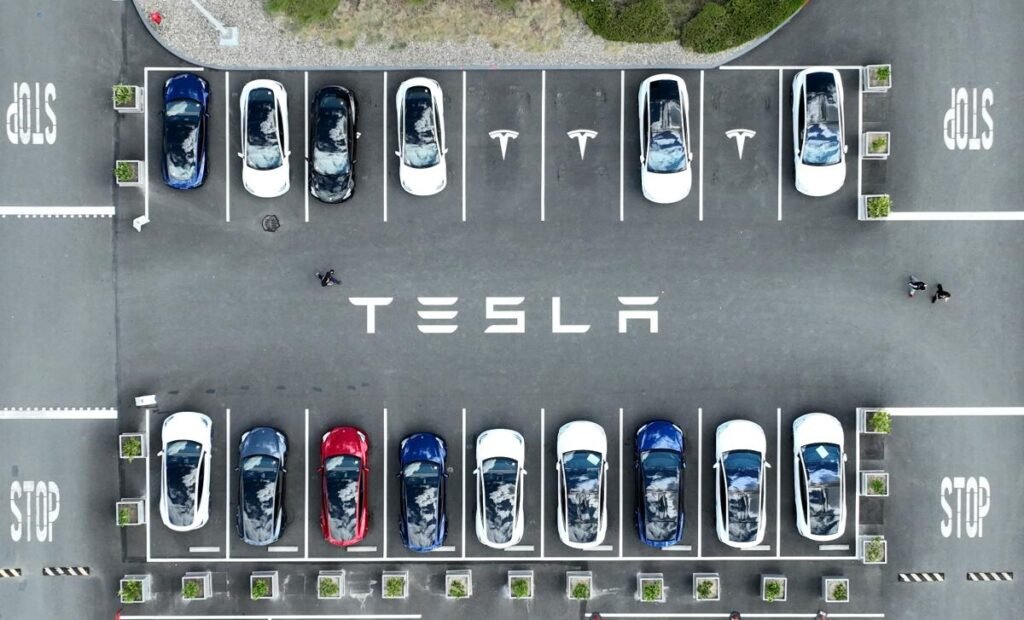While two AI leaders with undeniable competitive moats are historically cheap, another Wall Street darling is staring down a growing number of headwinds.
Dating back more than three decades, Wall Street seemingly always has a next-big-thing trend or innovation to captivate the attention of investors. For the last two-plus years, nothing has been bigger than the evolution of artificial intelligence (AI).
With AI, software and systems are given the ability to reason, act, and evolve on their own. This capacity to reason and act autonomously gives this technology broad-based utility in most industries around the globe. It’s precisely why the analysts at PwC are forecasting a $15.7 trillion addressable market for AI by the turn of the decade.
Image source: Getty Images.
While there’s no denying that AI has sweeping application, history has taught us that not every stock riding a next-big-thing trend will necessarily be a winner. As we motor forward into April, two unstoppable AI stocks have separated themselves from the pack as outstanding buys, while another AI darling is best left on the shelf.
Unstoppable AI stock No. 1 to buy with confidence in April: Alphabet
The first artificial intelligence stock that makes for a sensational buy entering the second quarter of 2025 is none other than Google parent Alphabet (GOOGL -0.34%) (GOOG -0.26%). While there have been some concerns about slowing U.S. economic growth and the possibility of Donald Trump’s administration clamping down on big tech stocks, Alphabet’s competitive moat and valuation are simply too enticing to ignore.
Though I’ll get to Alphabet’s AI ties in a moment, it’s important to recognize what an advertising juggernaut this company is. Google has accounted for between an 89% to 93% share of monthly worldwide internet search dating back more than 10 years. Having a near-monopoly on internet search has businesses lining up to pay a premium to get their message(s) in front of users.
To add, Alphabet is going to benefit from the nonlinearity of economic cycles. This is to say that recessions are historically short-lived — the typical recession since the end of World War II has lasted about 10 months — while economic expansions stick around for years. Ad-driven operating models thrive on this disparity.
But the real excitement for Alphabet is its incorporation of generative AI solutions into Google Cloud, which is currently the third-largest cloud infrastructure service provider by spend in the world. Google Cloud became recurringly profitable in 2023, and the addition of AI solutions should only serve to increase the operating cash flow coming from this considerably higher-margin segment.
Alphabet also closed out 2024 with an enviable treasure chest of roughly $95.7 billion in cash, cash equivalents, and marketable securities. The cash flow generated from its operations, coupled with its existing cash, allows for aggressive reinvestment in high-growth initiatives, share repurchases, and the occasional acquisition.
Shares of Alphabet can be picked up for 15 times forward-year earnings, which represents a 33% discount to its average forward-year earnings multiple over the last half-decade.

Image source: Getty Images.
Unstoppable AI stock No. 2 to buy hand over fist in April: Meta Platforms
A second unstoppable artificial intelligence stock that’s begging to be bought by opportunistic investors in April is social media titan Meta Platforms (META 0.56%).
Not to sound like a broken record, but Meta’s foundational catalyst is the same as Alphabet: advertising. The company’s family of apps lured an average of 3.35 billion daily active people to its sites in the month of December. These sites include Facebook (the most-popular of all social media destinations), WhatsApp, Instagram, Threads, and Facebook Messenger, among others. With no other company offering businesses access to as many users, Meta is usually able to command premium ad-pricing power.
Similarly, Meta Platforms is typically going to ebb-and-flow with the U.S. and/or global economy. Nearly 98% of its $164.5 billion in net sales last year can be traced back to advertising, which means multiyear expansions for the U.S. and global economy should fuel ad spending.
However, the addition of AI has the potential to supercharge Meta’s revenue and profits. For instance, giving advertisers access to generative AI solutions can help them craft messages that are unique to users on the platform. Meta is already incorporating AI into its marketing platforms and has observed a boost in its operating performance from this move.
Additionally, AI is expected to play a key role in the continuing development of the metaverse — the 3D virtual world where users can interact with each other and their surroundings. Meta CEO Mark Zuckerberg has a phenomenal track record of developing new platforms and not monetizing them until the time is right. When the metaverse is ready for commercialization, Meta stands to be one of the key access points.
And did I mention that Meta Platforms’ stock remains reasonably cheap? Its forward price-to-earnings (P/E) ratio of 20 is 6% below its trailing-five-year average, and quite the deal considering the possibility of earnings growth reaccelerating in the latter half of the decade.
The AI darling investors should avoid in April: Nvidia
Unfortunately, not all artificial intelligence stocks are worth buying at this point in the development cycle. Despite its near-parabolic move higher since 2023 began, the AI darling that should be avoided by investors is semiconductor kingpin Nvidia (NVDA -0.71%).
To be fair, Nvidia has done a lot right, which is why it briefly became the largest publicly traded company in the world. Its Hopper (H100) and Blackwell graphics processing units (GPUs) quickly became the top choice in AI-accelerated data centers, to the point that Nvidia has a near-monopoly on AI-data center GPU market share.
Nvidia has also benefited from AI-GPU scarcity. With demand easily overwhelming supply, Wall Street’s AI kingpin has been charging a 100% or greater premium for its Hopper chip, when compared to direct rivals like Advanced Micro Devices.
But it’s my suspicion, based on reported data and historical context, the good times are over for Nvidia.
For example, competition is ramping up from all angles. Aside from AMD and other direct competitors boosting their AI-GPU output and introducing next-generation chips, many of Nvidia’s top customers by net sales are internally developing AI-GPUs to use in their high-compute data centers. Even though these chips lack the superior computing speeds of Nvidia’s hardware, they’re notably cheaper and more readily available than Hopper or Blackwell. It’s a recipe that could see Nvidia losing out on data center real estate, as well as its premium pricing power.
Furthermore, there hasn’t been a single game-changing innovation or technology for more than three decades that’s avoided an early innings bubble. Without fail, investors overestimate the early stage adoption and utility of new technologies, which leads to these lofty expectations eventually not being met.
With most businesses nowhere close to optimizing their AI solutions, it would appear artificial intelligence is the next in a long line of bubbles. If the AI bubble were to burst, no company would likely be hit harder than Nvidia, which derived more than 88% of its net sales in fiscal 2025 (ended Jan. 26) from its data-center segment.
Lastly, Nvidia’s valuation is worrisome. Last summer, it peaked at a price-to-sales (P/S) ratio of 42, which is consistent with the P/S ratios of other market-leading businesses prior to bubble-bursting events. Even with its P/S ratio falling to 21, it’s still roughly double that of its “Magnificent Seven” peers.
















